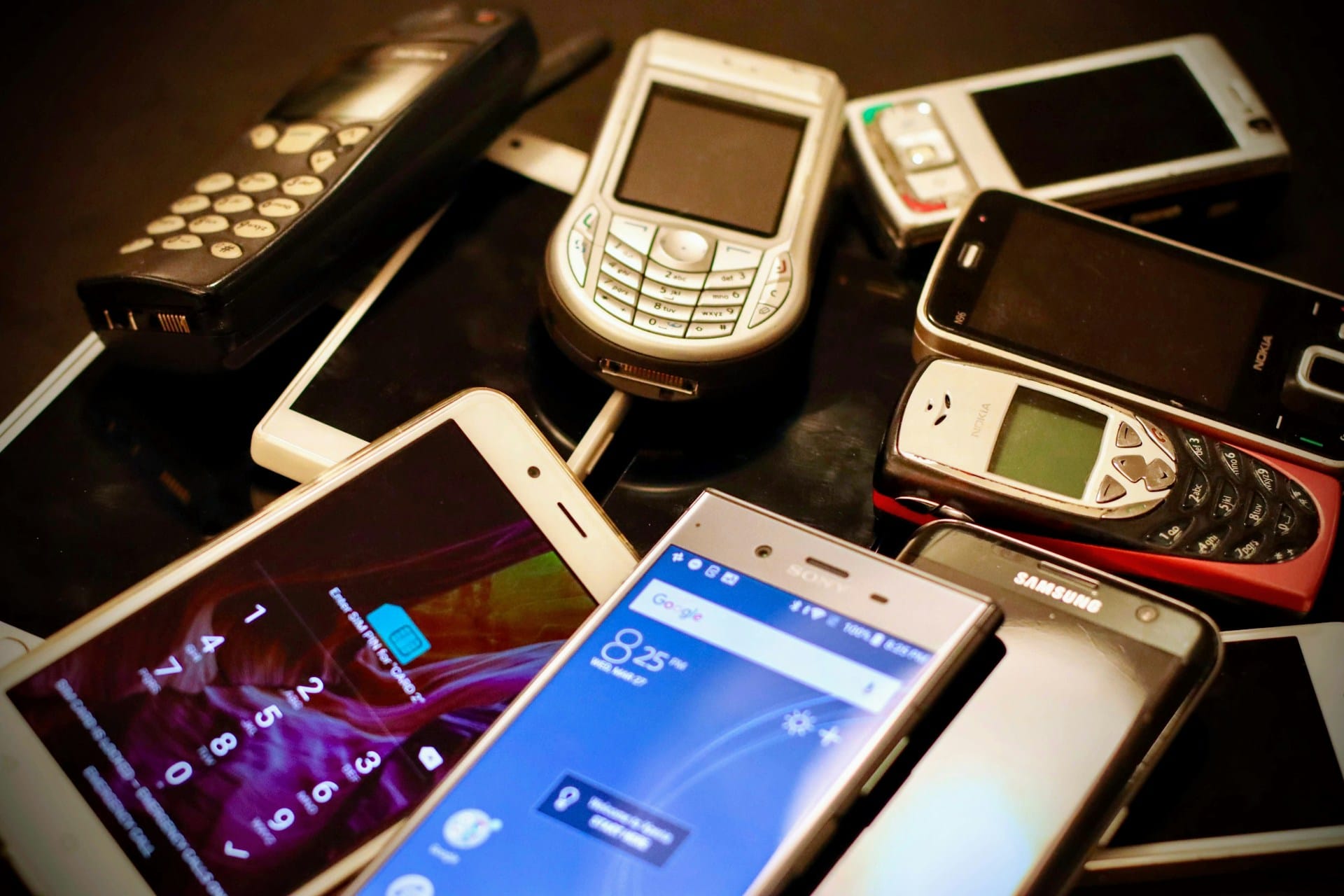Between 1999 and 2007, mobile phones underwent a rapid transformation, evolving from simple devices for calls and messages into hubs of communication, entertainment, and productivity. This article outlines the most important milestones, iconic models, and brands that set the standard during this key period.
1999: The Starting Point of the Revolution
The year 1999 marked a turning point in mobile telecommunications. The Nokia 3210 and its successor, the Nokia 3310, became global phenomena. With internal antennas, built-in games like Snake, and a durability that is still remembered with nostalgia, these models symbolize the beginning of mobile mass adoption.
Meanwhile, manufacturers like Motorola continued to dominate the enterprise device segment with models like the Motorola StarTAC, the world’s first flip phone. This innovative design hinted at a trend that would later be seen in models like the Razr V3.

2000-2001: The Rise of SMS and Limited Internet Access
With the turn of the millennium, text messages (SMS) established themselves as an indispensable communication tool. Users, particularly the youth, found SMS to be an affordable and quick way to communicate, transforming mobile phones into social media.
At the same time, the Wireless Application Protocol (WAP) was introduced, allowing access to simplified versions of websites. Although limited in functionality, it was a first step toward the mobile browsing experience we take for granted today.
Models like the Ericsson R380, considered one of the first smartphones, began to include additional functionalities such as email access and WAP support, even though its interface remained unintuitive for the average user.
2002: The Beginning of the Camera Era
2002 marked a milestone with the arrival of the first camera phones. The Nokia 7650 and the Sony Ericsson T68i led this innovation, allowing users to capture and share images for the first time. Although the camera quality was basic, their inclusion revolutionized how users documented their lives.
In Japan, Sharp and Kyocera were already leading the market with models like the Sharp J-SH04, one of the first camera phones in the Asian market. This advance reflected the growing trend of convergence between mobile devices and digital cameras.
2003: Connectivity and Entertainment
2003 witnessed the development of new forms of connectivity. Bluetooth technology began to become popular, enabling wireless data transfers between devices. Moreover, hybrid models like the Nokia N-Gage were launched, aiming to combine telephony and gaming. Although its design wasn’t favored by everyone, the concept marked an attempt to diversify mobile phone functionalities.
In the business realm, BlackBerry gained ground with models like the BlackBerry 7230, offering real-time email and QWERTY keyboards that would become a standard for business devices.
2004: The Arrival of 3G and the Motorola Razr V3
The rollout of 3G networks in 2004 marked a significant leap in the mobile experience, allowing much faster data speeds. This opened the door to video calls, video streaming, and quicker downloads, revolutionizing how users consumed content.
That same year, Motorola launched the Razr V3, a model that defined the aesthetics of mobile phones. With its ultra-slim design, aluminum casing, and backlit keyboard, the Razr was not only a bestseller but also became a status symbol.
2005: The Diversification of Devices
2005 solidified key trends. Brands like Sony Ericsson released the Walkman W800i, which integrated a digital music player, while Nokia continued to lead with models like the Nokia N70, which incorporated more advanced cameras and improved connectivity.

In the business segment, BlackBerry reaffirmed itself with devices like the BlackBerry 8700, while Palm tried to stay relevant with its Palm Treo line, offering PDA functions alongside telephony capabilities.
On the other hand, Samsung began to stand out with models like the Samsung SGH-D500, a sliding phone that combined innovative design with advanced functionalities, including a 1.3 MP camera and Bluetooth.
2006: The Transition to Smartphones
2006 was a year of transition toward what we now understand as smartphones. Nokia launched the Nokia N95, a device that integrated GPS, a 5 MP camera, and Wi-Fi connectivity, features that positioned it as one of the most advanced mobile phones of its time.
Meanwhile, HTC began to gain relevance with its line of devices based on Windows Mobile, offering a closer experience to that of a personal computer.
2007: The Year That Changed Everything
In 2007, Apple launched the first iPhone, redefining the industry with its capacitive touchscreen, full web browser, and intuitive interface. This device not only marked the beginning of a new era but also set a standard that modern smartphones would follow.

Google introduced Android, which would debut in 2008 but was already positioning itself as the direct competitor to the iPhone. Manufacturers like HTC and Samsung adopted Android as their primary operating system, laying the groundwork for the dominance of this ecosystem.
Final Reflection: From Tool to “Third Arm”
Between 1999 and 2007, mobile telecommunications transitioned from a basic communication tool to an essential element of modern life, integrating music, photography, browsing, and internet access. However, this evolution raises the question: have smartphones improved our communication or simply made us more dependent on technology?
What is undeniable is that these years marked the beginning of a revolution that continues to transform the world.

